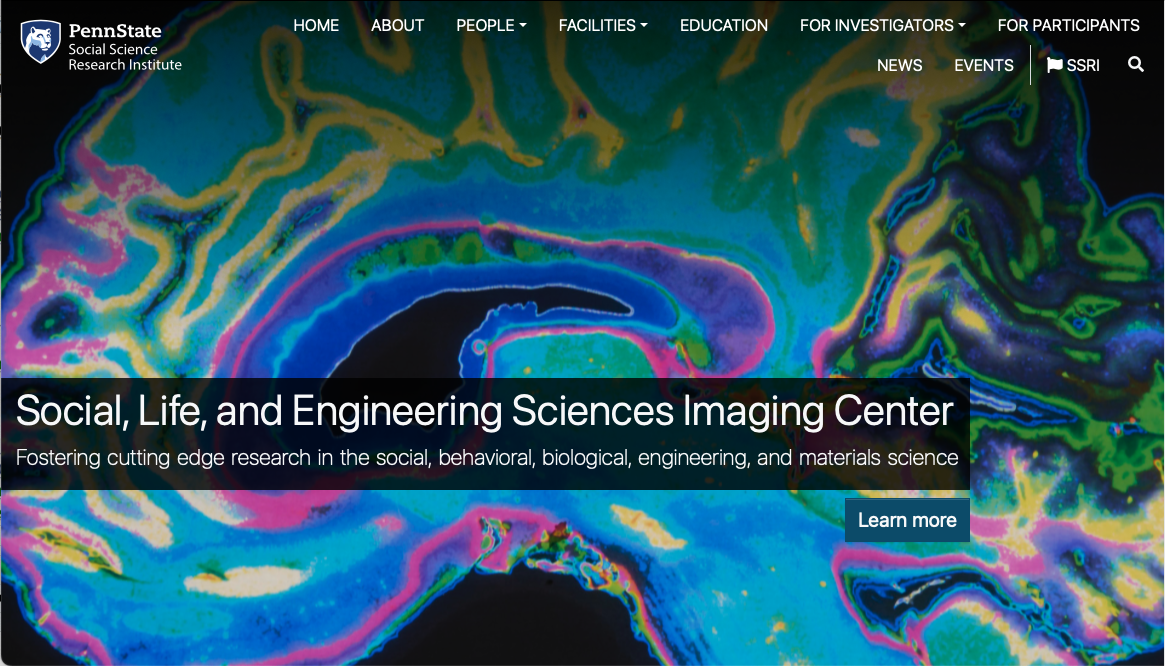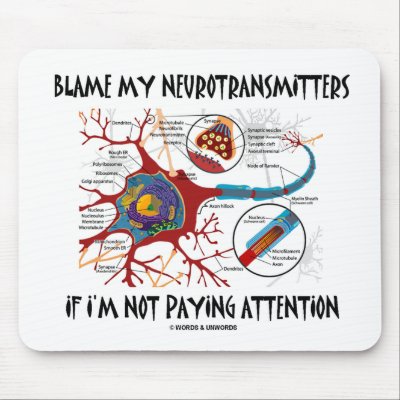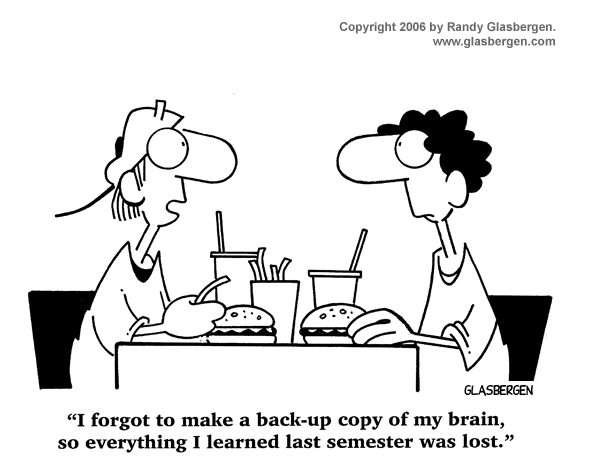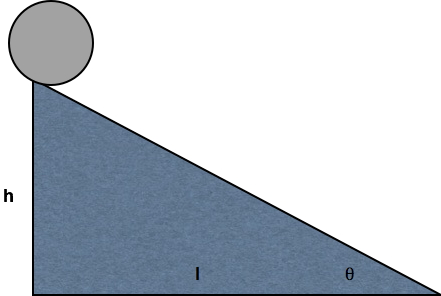Topic 1 Course intro
People
Professor
Rick O. Gilmore, Ph.D. Professor of Psychology

Figure 1.1: https://upload.wikimedia.org/wikipedia/commons/thumb/0/0b/DenverCP.JPG/266px-DenverCP.JPG

Figure 1.6: https://imaging.psu.edu
What is this course about?
- What is behavior?
- How is human behavior similar to/different from other animals?
- What are the neurological bases (of human) behavior?
- What other bases (of human behavior) are there?
- How do the neurological bases of human behavior affect your life?
- Why does taking/drinking X make me feel Y?
- My grandmother has Alzheimer’s disease. What’s happening to her brain?
- Carrie Fisher had bipolar disorder. What’s that about?
- Why is sleep so important for brain health?
- My mom says my frontal cortex isn’t fully mature. Is she right?
- Is it safe for high school athletes to play football (or soccer, hockey, etc.)?
Genes
![[@Jimenez2009]](http://ecx.images-amazon.com/images/I/41OzMnt3lpL._SX319_BO1,204,203,200_.jpg)
Figure 1.8: (Jimenez, n.d.)
Keys for success
- Study the figures, not just the text.
- Study regularly – don’t cram.
- Come to class.
- Participate!
Why is biology essential for the science of behavior?
- What is science?
- What distinguishes sciences?
- What is neuroscience?
- Why is neuroscience harder than physics?
What is science?
- Body of facts or truths
- Process of acquiring knowledge
- Systematic study
- Observation, experiment, description
- Aims at reliable, reproducible, general, systematic, universal laws
- Strives for objectivity
Science vs. other ways of thinking
- Science is a way of thinking and a set of behaviors
- Scientists strive toward communal norms (Merton 1979): communalism, universalism, disinterestedness, organized skepticism.
- Science describes, tries to predict
- Science alone not well-suited to prescribing (recommending) or proscribing (prohibiting)
- little to say about what is good, just, right, moral, etc.
- (Although systematic descriptions of phenomena can be used to make pre/proscriptive claims…)
- Science rests on evidence and logic
- NOT on authorities (e.g., people whose stature is largely or solely based on their position or economic status)
- However, some scientific claims (and scientists) are more credible and authoritative than others.
- Science respects tradition
- but not uncritically
- questions and tests it repeatedly…
- Science should be reproducible, robust, transparent
- others can get the same answer, but see PSYCH 490.003
- Science
- led to huge advances in human health & prosperity
- essential for maintaining & extending those advances
- Example: Rapid development and deployment of multiple, effective, and safe vaccines for SARS-CoV-2 that sharply reduce severe illness and death.
Similarities among sciences
- What are the different kinds of X?
- Form, e.g., anatomy
- How does X work?
- Function, e.g., physiology
- Where did X come from?
- Origins, e.g., development/evolution
Examples
- “Coronavirus gets its name because of its crown-like shape.”
- “Viruses reproduce (and cause illness) by forcing host organisms to create massive quantities of the virus that then spread to others.”
- “Coronavirus appears to have originated in non-human animals in China.”
An example of scientific perspectives on origins…

Figure 1.14: https://www.evogeneao.com
What is neuroscience?
- The study of the nervous system
- And the behavior it makes possible
- Questions neuroscience asks…
- What are the parts of the nervous system?
- How do the parts work? What do they do?
- Where did they come from?
References
Jimenez, Guillermo C. n.d. Red Genes, Blue Genes: Exposing Political Irrationality. Autonomedia. https://www.amazon.com/Red-Genes-Blue-Political-Irrationality/dp/1570272034.
Merton, Robert K. 1979. The Sociology of Science: Theoretical and Empirical Investigations. Edited by Norman W Storer. University of Chicago Press. https://www.amazon.com/Sociology-Science-Theoretical-Empirical-Investigations/dp/0226520927.
Sejnowski, Terrence J, Patricia S Churchland, and J Anthony Movshon. 2014. “Putting Big Data to Good Use in Neuroscience.” Nature Neuroscience 17 (11): 1440–41. https://doi.org/10.1038/nn.3839.









![[[@sejnowski2014putting]](http://doi.org/10.1038/nn.3839)](https://media.springernature.com/lw685/springer-static/image/art%3A10.1038%2Fnn.3839/MediaObjects/41593_2014_Article_BFnn3839_Fig1_HTML.jpg?as=webp)

